The hardest thing about being a DIYer is that you have to accept the limitations of your capabilities and learn when to take something to a professional. That sounds pretty easy, but pride combined with a track record of achieving most things you put your mind to can impair your critical thinking skills.
I know from experience that changing a car tire is one of those things you'll eventually want to take on at home. Especially after you’ve taken on bigger jobs, found how affordable the tools can be, and watched a few videos that show how straightforward it can be. What's the worst that could happen? You've got The Drive's crack team of DIYers here to help you find out.
Let's get after it.
Changing a car tire is absolutely possible to do at home. However, it's not as simple as it appears. There's a little more going on than just stretching a piece of rubber around a wheel.
On top of being reinforced by cords and belts beneath the tread, the sidewall of the tire is built to resist flex in order to support the vehicle and help keep the bead of the tire seated. Not only do you need to strong-arm the rigid structure, but you also need to use a bead breaker or tire hammer to break the bead, as well as set the bead during installation.
As you’ll research, you’ll find that wrestling a tire onto and off of a wheel is made relatively easy with soapy water and tire spoons. Still, it does take some muscle and finesse to get the job done, with finesse being a keyword as you need to be careful not to damage the tire or the wheel while you work.
Lastly, the new tire and wheel combination must be balanced. This isn't something you typically do with smaller tire applications, but is absolutely crucial for automotive tires. Specialty tools make all of this possible, even effortless in some cases.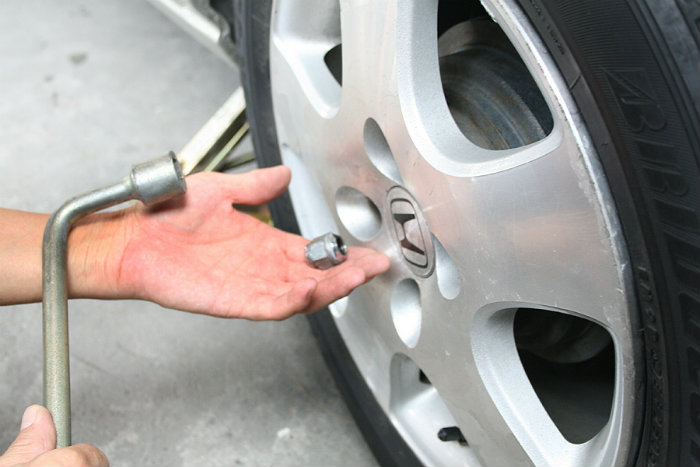 However, as you review the list of steps and equipment involved in the process, the question changes from whether it’s possible to if it’s worth it.
However, as you review the list of steps and equipment involved in the process, the question changes from whether it’s possible to if it’s worth it.
To be clear, you can buy pro-level tire mounting and balancing machines to use at home. These give you the means to work as a professional would, only in a personal shop. If you have the money and can justify the expense, go for it.
Realistically, most of us will seek to do this in the cheapest way possible. I say we because I have purchased the cheap stuff to take this type of work on myself. At the very least, you'll need tire spoons, a bead-breaker or tire hammer, a valve stem tool, and some soapy water to mount and dismount the tire.
As for balancing the assembly, you can do that at home, too. A simple bubble balancer will do the job well enough for some people’s standards. However, these simple devices, while the standard years ago, are dated and they take some patience to work with. There’s also the argument that static balancing methods have been replaced with modern machines that achieve dynamic balancing for a reason, but that’s a discussion of its own.
However, these simple devices, while the standard years ago, are dated and they take some patience to work with. There’s also the argument that static balancing methods have been replaced with modern machines that achieve dynamic balancing for a reason, but that’s a discussion of its own.
Altogether, you can set yourself up with the equipment to change tires yourself for a few hundred dollars. All that's standing between you and the final product is some hard work and willingness to learn.
But we have to come back to the question of whether it’s worth it. It’s really not for the average person.
It’s really not for the average person.
That’s not to say learning a new skill isn’t good. However, it’s only going to cost around $100 to have a professional install the tires for you. Considering how little most people, even dedicated wrenchers actually change tires, it’s generally better just to pay a professional to do it.
Even if you take the affordable route, it's going to take a long time for those tools to pay for themselves when you factor in the amount of time it takes to learn and the amount of work that goes into changing tires.
Of course, there are exceptions. Some folks really do need to take this on themselves and others are just better off. Even a pro-level tire-changing machine will pay for itself in a short while if you routinely swap tires throughout the year for a personal collection or due to special circumstances. Meaning that, while the average person is better off leaving tire changes to the professionals, it’s unfair to make a blanket statement that the same is true for everyone.
It all comes down to the individual. Again, it’s never a bad thing to learn a new skill, but you’ll have to make a judgment call of whether or not it’s practical for your situation.
Always make an informed decision. Even if the right answer seems very obvious, knowing why is always important. That's why I've attached a full tutorial on how to change a tire at home. It does a great job of illustrating what to expect when doing this with basic hand tools, allowing you to determine if it really is or isn't something you should tackle yourself.
Knowing how to change a tire is a necessary skill for all drivers. If you rely on a cell phone to save you in a roadside emergency, there’s always that chance you will forget to charge it, be out of range, or leave it at home. Flat tires can happen anywhere, and a cell phone is no substitute for knowing how to change a flat tire.
If you rely on a cell phone to save you in a roadside emergency, there’s always that chance you will forget to charge it, be out of range, or leave it at home. Flat tires can happen anywhere, and a cell phone is no substitute for knowing how to change a flat tire.
Thankfully, changing a tire isn’t all that hard! Just adhere to the following guidelines to be prepared in case you have a flat.
These items should have come with your vehicle:
Jack
Lug wrench
Fully inflated spare tire
Vehicle owner’s manual
If you have misplaced any of these items, or if your car did not come with these items, you should purchase new ones right away. And be sure you’re regularly inflating the spare tire to your vehicle manufacturer’s recommended PSI. You should check the spare’s air pressure every time you check your other tires. Remember to check pressure every month and before long trips or carrying extra load.
Here are some items that don’t come with your vehicle but that you should stow in your trunk or glove box in case you have to change a flat tire:
Flashlight with working batteries
Rain poncho
Small cut of 2"x6” wood to secure the jack
Gloves
Wheel wedges
As soon as you realize you have a flat tire, do not abruptly brake or turn. Slowly reduce speed and scan your surroundings for a level, straight stretch of road with a wide shoulder. An empty parking lot would be an ideal place. Level ground is good because it will prevent your vehicle from rolling. Also, straight stretches of road are better than curves because oncoming traffic is more likely to see you.
Never attempt to change your tire on a narrow shoulder near oncoming traffic. Keep moving (slowly) until you find a safer spot. While driving on a flat risks ruining your rim, replacing a rim is better than being hit by an inattentive driver.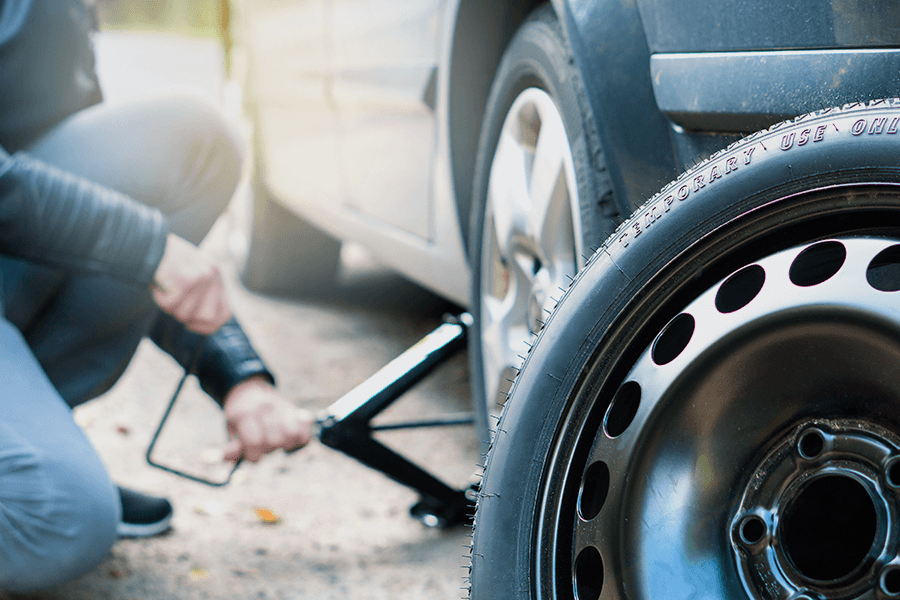
Make sure to consult your owner’s manual and review their specific steps on how to change a flat tire for your vehicle
Your hazard lights or “flashers” will help other drivers see you on the side of the road. To avoid an accident, turn them on as soon as you realize you need to pull over.
Once stopped, always use the parking brake when preparing to replace a flat tire. This will minimize the possibility of your vehicle rolling.
Wheel wedges go in front of or behind the tires to further ensure the vehicle doesn’t roll while you fix the flat tire. If you’re changing a rear tire, place these in front of the front tires. If your flat tire is at the front, put the wheel wedges behind the rear tires.
Bricks or large stones will work just as well as “real” wheel wedges. Just be sure they’re large enough to stop the car from rolling.
If your vehicle has a hubcap covering the lug nuts, it’s easier to remove the hubcap before lifting the vehicle with the jack.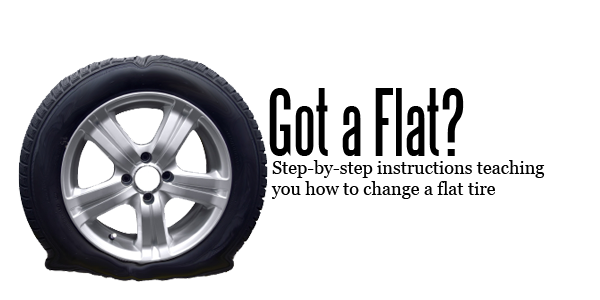 If your lug nuts are exposed, you can skip ahead to Step 6.
If your lug nuts are exposed, you can skip ahead to Step 6.
Use the flat end of your lug wrench to remove the hubcap. This will work for most vehicles, but some hubcaps need a different tool to come off. Consult your owner’s manual for proper hubcap or wheel cover removal procedures.
Using the lug wrench, turn the lug nuts counterclockwise until you break their resistance. You may have to use force, and that’s ok. Use your foot or all of your body weight if necessary.
Loosen the lug nuts about ¼ to ½ of a turn, but don’t remove them completely yet. Save that for when it’s time to remove your tire/wheel from the vehicle.
The right place for the jack is usually beneath the vehicle frame alongside the tire that’s flat. Many vehicle frames have molded plastic on the bottom with a cleared area of exposed metal specifically for the jack. To safely lift and avoid damage to the vehicle, follow the instructions for jack placement in your vehicle owner’s manual.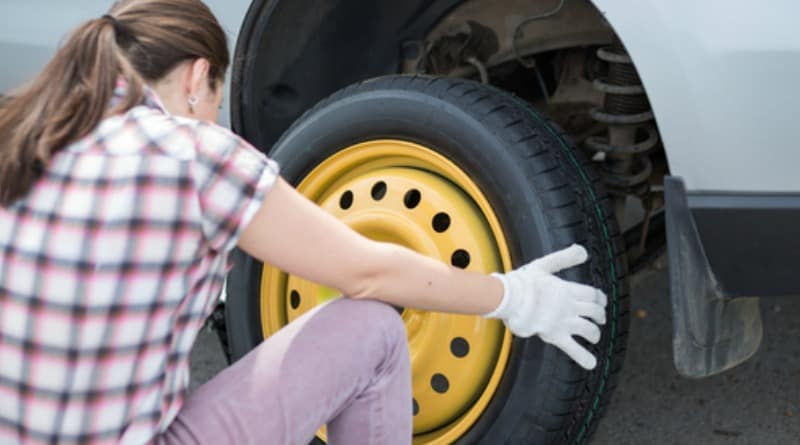
To prevent the jack from settling under the weight of your vehicle and coming off balance, place a small cut of 2x6” wood beneath it before attempting to raise your vehicle. This tactic is especially helpful on asphalt.
With the jack properly positioned, raise the vehicle until the flat tire is about six inches above the ground.
Never put any part of your body under the vehicle during or after raising the vehicle with the jack.
Now it’s time to remove the lug nuts all the way. Since you've already loosened them, you should be able to unscrew them mostly by hand.
Gripping the tire by the treads, pull it gently toward you until it’s completely free from the hub behind it. Set it on its side so that it doesn’t roll away.
Now place the spare on the hub by lining up the rim with the lug bolts. Push gently until the lug bolts show through the rim.
Put the lug nuts back on the lug bolts and tighten them all the way by hand. Once they are all on, check each one again, tightening as much as possible. You will tighten them with the wrench after lowering the vehicle to the ground.
Use the jack to lower the vehicle so that the spare tire is resting on the ground but the full weight of the vehicle isn’t fully on the tire. At this point, you should tighten the lug nuts with the wrench, turning clockwise, as much as you can. Push down on the lug wrench with the full weight of your body.
Bring the vehicle all the way to the ground and remove the jack. Give the lug nuts another pull with the wrench to ensure they’re as tight as possible.
If the hubcap you took from the flat tire will fit your spare, put it in place the same way you removed it initially. If it doesn’t fit, stow it away with the tire when you stow your equipment.
If it doesn’t fit, stow it away with the tire when you stow your equipment.
You have before you a jack, a lug wrench, wheel wedges, your flat tire, and possibly a hubcap. Don’t forget to put all of them in your vehicle before driving away.
You should check the tire pressure of the spare tire to make sure that it is safe to drive on. “T-Type” temporary spares, also called “mini-spares,” require 60 psi (420 kPa). If the tire needs pressure, drive (slowly) to a service station immediately.
Temporary spare tires aren’t made to drive long distances or at high speeds, so drive cautiously until you’re able to visit a tire technician. A professional should be able to determine whether your tire needs a repair or if it’s time to replace it.
Aside from taking your tire to a professional, the above procedure shouldn’t take more than 15 to 30 minutes to change a tire. Just be sure you don’t leave out any steps.
Just be sure you don’t leave out any steps.
It’s beneficial practice changing a tire in your garage or driveway to ensure you’re ready to handle this situation if it ever happens to you.
Knowing how to fix a flat tire is great, but regular tire maintenance is even more important. In addition to reviewing this guide regularly, remember to do the following:
Keep your tires properly inflated
Rotate your tires according to the manufacturer’s guidelines
Monitor for tread wear
All of these precautions will extend the life of your tires and reduce the likelihood of a flat. While there’s no way to prevent flat tires completely, proper care can improve performance and ensure your tires last as long as possible.
There’s never a good time for a flat. That’s why Bridgestone DriveGuard tires are masterfully engineered to keep you moving for up to 50 miles at speeds up to 50 MPH without disruption.
There’s never a good time for a flat. That’s why Bridgestone DriveGuard tires are masterfully engineered to keep you moving for up to 50 miles at speeds up to 50 MPH without disruption.
See Details Find Your Fit
During the period of mass changing shoes at tire shops, you can’t push through. But you can save both waiting time in line and money.
Tire inflation with nitrogen and 7 more fittings at the tire shop
The tire manufacturer's instructions say to change shoes when the temperature drops below +7°C. In my opinion, it's too early. There are still a lot of cars on the roads with summer tires around.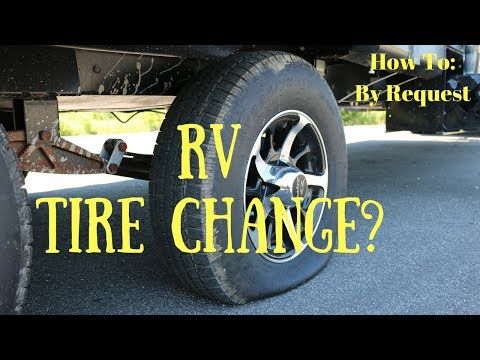 And at this temperature, the braking distance on your studded tires may be even longer.
And at this temperature, the braking distance on your studded tires may be even longer.
I advise you to change the wheels to winter ones when the temperature drops below zero at night. That's when it really is time, because in the morning an icy area can be caught on the roads. At the same time, out of habit, it will seem very slippery.
Precisely then, to do it at the most correct and convenient time. The vagaries of the weather are unpredictable. Residents of the Rostov region, for example, say that sometimes during the winter period they rearrange the wheels from winter to summer and back several times.
Dismantling wheels (that is, dismantling a tire from a rim) at home is not an easy task that requires appropriate skills and knowledge. We will describe a simpler job that, in theory, any average motorist who does not have special tools and experience in tire fitting should be able to handle. Therefore, we assume that you have a complete set of serviceable winter tires mounted on rims.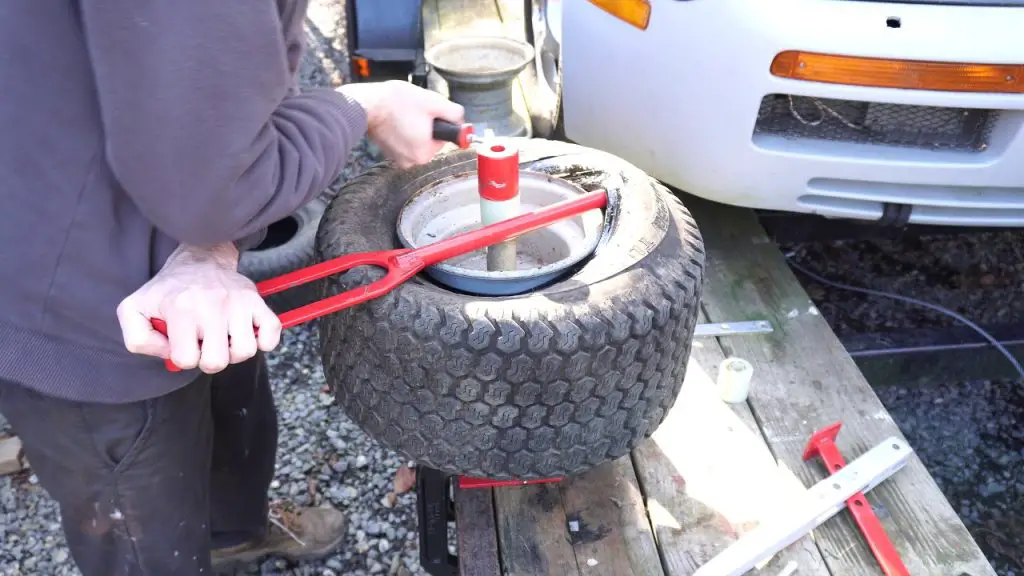 You remember that in the spring they did not lose pressure, there are no cuts on them, and a couple of self-tapping screws do not stick out of the tread in addition to the spikes. And, most importantly, the tread height is more than 4 mm. These are the modern requirements for winter tires. If at least one of the conditions is violated, then it is better to solve the problem before the onset of the hot tire season.
You remember that in the spring they did not lose pressure, there are no cuts on them, and a couple of self-tapping screws do not stick out of the tread in addition to the spikes. And, most importantly, the tread height is more than 4 mm. These are the modern requirements for winter tires. If at least one of the conditions is violated, then it is better to solve the problem before the onset of the hot tire season.
If I change wheels, do I need to balance them every season?
There are car owners who meticulously balance tires before each season. In my opinion, this is not justified. I recommend installing the wheels on the car, then drive at different speeds, but not higher than your usual ones. If the imbalance (it is manifested by vibrations on the steering wheel or seat) is not felt, then the balancing can be postponed until future seasons. In principle, it is possible to balance winter tires before storage: after all, the spring period for changing wheels in tire shops is more extended in time compared to autumn, and therefore there are noticeably fewer queues.
So we take the wheels out of storage. For one, this is the corner of the garage, for the other - a balcony, for the third - the warehouse of the nearest car service that provides wheel storage service. Tires may have different temperatures depending on storage conditions. Wheels removed from a warm room, having cooled down by 20 ° C, will lose about 0.2 bar of pressure, and gradually, as they cool down. Well, the cold ones have nothing to lose! Therefore, cold ones can be immediately pumped up to the nominal pressure, well, maybe 0.1–0.2 bar more, given that it will only get colder further. And warm tires must either be inflated with a large margin immediately, or set the pressure at the end of all work, when the air in them cools down.
If you use a standard jack, it is better to substitute a special stand under the car for insurance. Well, or at least put a spare wheel so that when it falls, the threshold lies on the rim, and not on the tire. Please note that this will most likely damage the disc. Therefore, it is better to use an old unnecessary wheel.
Please note that this will most likely damage the disc. Therefore, it is better to use an old unnecessary wheel.
Which jack is best? - examination of the RF
We find a flat area with a hard surface. If you change the wheels yourself twice a year, then I strongly advise you to get a convenient jack. At least small and inexpensive, but rolling. It is significantly more reliable and durable than the regular one that your car was equipped with. It is advisable to use a balloon wrench with a cruciform or with an elongated handle - it is more convenient than the standard one supplied with the car.
Prepare a wheel stop - at least half a brick. Inspect the secret key for damaged code elements and clean the secret nuts/bolts on all wheels.
If the winter set of wheels has different rim characteristics, remember if spacers are needed between the rim and the hub lug - they should be prepared in advance.
The wheel jack is based on a hydraulic cylinder. Raises quickly, and lowers even faster.
Just in case, after the first ride, check the tightness of the wheel fasteners, and the next morning check the tire pressure.
First, remove the old tire from the rim. To do this, raise the car with a jack, unscrew the fixing bolts with a wheelbrace and remove the wheel from the car. Lay the wheel on the ground with the valve up, remove the nipple from the valve and let the air out of the tube or tire (if the tire is tubeless). After that, “drown” the valve inside the tire and stand with your feet on the wheel so that the sidewalls of the tire are wrung out from the rim. Sometimes the tire "sticks" to the rim and you have to make an effort. After you managed to wring out the sidewalls, insert the mounting spatula into the gap between the rim and the sidewall of the tire. Working with two mounting blades, bring the sidewall of the tire out of the wheel rim, and pull out the chamber into the resulting gap. In the same way, bring the other sidewall of the tire through the same rim, and remove it from the disk. Be careful not to damage the disc. Particular care must be taken with a fragile alloy wheel.
Lay the wheel on the ground with the valve up, remove the nipple from the valve and let the air out of the tube or tire (if the tire is tubeless). After that, “drown” the valve inside the tire and stand with your feet on the wheel so that the sidewalls of the tire are wrung out from the rim. Sometimes the tire "sticks" to the rim and you have to make an effort. After you managed to wring out the sidewalls, insert the mounting spatula into the gap between the rim and the sidewall of the tire. Working with two mounting blades, bring the sidewall of the tire out of the wheel rim, and pull out the chamber into the resulting gap. In the same way, bring the other sidewall of the tire through the same rim, and remove it from the disk. Be careful not to damage the disc. Particular care must be taken with a fragile alloy wheel.
Before installing a new tire on a rim, check its condition - carefully inspect it for defects and damage, make sure that the tire and rim fit each other in size. Also check the condition of the disk, for mechanical damage, the absence of dirt and rust, wear of the rim flanges. Remove the old balance weights and the old valve if the tire is tubeless.
Also check the condition of the disk, for mechanical damage, the absence of dirt and rust, wear of the rim flanges. Remove the old balance weights and the old valve if the tire is tubeless.
When fitting new tyres, remember to take into account the color markings and indications on the tyre. Namely, the recommended direction of rotation, which is usually indicated by an arrow on the sidewall of the tire. For an easier and more gentle installation of the tire, you need to apply a special lubricant or soap solution to its bead and bead heel. Don't over-lubricate or the tire will slip on the rim!
Mounting the tire on the rim is carried out in the reverse order with respect to dismantling, that is, first one sidewall is put on the rim of the rim and, if it is a tire with a tube, then the tube is inserted, while its valve must enter the hole in the rim. After that, the second sidewall of the tire is put on.
tire to normal, while taking into account the fact that pressure measurement must be carried out when the tire is installed on the car, that is, taking into account the weight of the car.
If the tire is tubeless, then the task is more complicated. Unfortunately, it will not be possible to inflate it with a conventional hand or foot pump or even a car compressor until the tire beads “sit” tightly on the rim, since the air will simply go out into the gap between the tire and the rim of the disc. But there is a way out!
To solve the problem, inflate any car wheel to 3.5 - 4 atm., remove the hose from the pump, put one end of this hose (the one without a fitting) directly on the valve of a freshly mounted tubeless tire, after removing the nipple from the valve , and put the other end of the hose, equipped with a fitting, on the “pumped” tire. At the moment of putting on the fitting, a large portion of air will enter the empty tubeless tire and "put it in place" on the disk. The beads of the tire will sit firmly on the rim, and the tire can now be inflated in the usual way. At service stations, special compressors with volumetric receivers are used to inflate tubeless tires, but, as you can see, you can solve this problem yourself, at home.